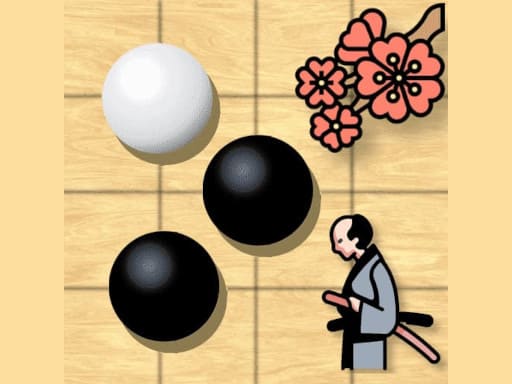
Meet Pin Master: Screw Puzzle Quest
Having teased our curiosity with that dangling plate, let’s get concrete: Pin Master: Screw Puzzle Quest is a sequence-and-logic puzzle mobile game where you tap screws/pins to remove them in the correct order so a metal plate (or object) falls, unlocking the next stage. Each level is a tidy mechanical riddle: bolts, nuts, plates, sometimes traps or timed components. The charm is tactile — you can almost feel the metallic clink — and the satisfaction of the “click” when you’ve cleared the right path. Designers lean into pleasing physics, bright simple art, and short levels that invite “one more try.” It’s casual but clever: approachable for kids, oddly meditative for adults, and sneaky enough to feel like a brain workout.
Why people love it (and why you should care)
Now that you know what it is, you’ll see why it sticks. The game hits a sweet spot between stress-free play and genuine problem solving. There’s no violence, just mechanical puzzles and an escalating “aha!” curve. Parents like the problem-solving practice; kids like tapping and instant feedback; casual players love bite-sized wins on the bus. Have you ever felt proud of outsmarting a puzzle that looked impossible at first glance? That feeling is this game in a capsule. On the other hand, its layered mechanics—locks, decoys, removable screws, and hint systems—mean you can keep growing as the levels go on. Next we’ll open the toolbox: controls, mechanics, and the objectives that make each level tick.
Controls, Core Mechanics, and Objectives
Basic controls — tap, hold, observe
Carrying on from what the game is, let’s handle the basics. Controls are gloriously simple: tap to remove a screw or pin, long-press sometimes shows a highlight or “preview,” and some versions offer a drag to rotate certain parts. There’s usually a hint button (often earned or buyable), a “random remove” power-up, and level-restart/reset buttons. The UX is designed for one-handed play: thumbs rule. Gentle vibrations or sound cues tell you when a choice is valid or catastrophic. In short: tap thoughtfully; the UI won’t make complicated gestures mandatory.
Physics, hazards, and victory conditions
Now let’s shift gears to mechanics that turn taps into satisfying logic. Each level has objects constrained by screws; removing them changes forces and collisions. Some screws are decoys that cause plates to tilt and jam other parts, others trigger traps or move blockers. Hazard examples: timed jaws that snap shut, one-way gates, or “magnetized” screws that attract plates if not neutralized. Victory is usually simple: get the target piece to fall into a goal zone or clear all dangerous elements within a move limit. Those limits add strategy—do you go slow and safe or fast and bold? We’ll explore strategic decisions that follow from these mechanics in the next section.
Level Types and Progression
Early levels: learning by doing
Now that you know controls and physics, let’s tour the progression. Early stages function as a gentle classroom: single plates, obvious screws, and forgiving puzzles. The learning here is implicit — the game trains you to notice which screws hold critical paths and which are red herrings. Designers introduce one new mechanic at a time: a swinging weight in level 5, a timed gate in level 12, a removable nut in level 20. This steady drip prevents overwhelm and builds confidence. Players often remember their first level-solve pride — I know I did — and that emotion fuels the next dozen stages.
Mid-to-late: complexity and combos
Here’s the twist: mid-game introduces combo thinking. You don’t just remove one screw; you plan sequences. A mid-level puzzle might require you to remove a decoy screw to let a counterweight swing, then quickly remove a clamp before the weight returns. Late-game puzzles layer several mechanics: multiple plates interacting, moving hazards, and optional stars or collectibles to max your score. The progression nudges you toward mental models—if you can think in sequences and physics, you’ll anticipate consequences two or three moves ahead. Next, we convert that anticipation into concrete step-by-step strategies for beginners.
Step-by-Step Strategies for Beginners
A friendly, fail-safe approach for kids and newcomers
Because you learned the progression above, you’ll find patience pays off. Start by scanning the level for the target object and all supports. Ask: which screws, if removed, MUST move the object? Those are your primary suspects. A safe beginner routine: 1) Observe 10 seconds. 2) Tap any purely decorative screws to see feedback. 3) Remove the least connected screw (often safe). 4) Watch the result and proceed. Treat the hint button as a coach, not a crutch. Mini-dialogue: “Kid: Can I tap this? Parent: Try observing first — what would happen?” This routine teaches prediction and reduces accidental failure.
Table: Beginner tactics & when to use them
To help you memorize, here’s a compact strategy table you can skim mid-level.
| Tactic | When to use | Why it works |
|---|---|---|
| Observe-first | Any new level | Builds a mental plan before acting |
| Test tap | Level has decorative screws | Reveals behavior without commitment |
| Remove outer screws | If plate is central | Often frees movement space safely |
| Use one hint | After 2-3 fails | Keeps momentum and teaches pattern |
| Reset early | When irreversible jam occurs | Saves time and avoids compounding errors |
These are practical, bite-sized choices a child (or a cautious adult) can use. Next we’ll walk into more advanced thinking for players who crave efficiency and mastery.
Advanced Tactics and Puzzle-Solving Mindset
Sequence design and “if-then” chains
Building on beginner steps, advanced play is all about imagining sequences like drama. Think “If I remove screw A, then plate B will swing; if B swings, I must remove screw C before the timer runs out.” This mental chaining lets you simulate outcomes without trial-and-error. Pro tip: visualize two moves ahead — if a swing will create a new obstruction, plan for it before you act. Ask yourself mini-questions: “What will block if I remove this? Where will gravity push that plate?” Those thought-questions are your cognitive toolkit.
When to gamble, when to guarantee (and entertaining mistakes)
Here’s a small anecdote: I once gambled by removing a “safe-looking” screw and watched a joyful cascade…right into a trap I hadn’t noticed. Laughter, humility, and restart. Advanced players learn risk calibration. Use randomness-removal power-ups when a single screw decision could go either way, and save hints for genuinely ambiguous junctures. A key advanced move is controlled sacrifice: remove a non-target plate to create space even if it costs a star or two. That’s efficiency for long-term progression. Next we’ll translate gameplay into kid-friendly educational benefits and parental strategies.
Tips for Children, Parents, and Educators
Learning outcomes — problem-solving, patience, spatial reasoning
Since you’ve seen both simple and sophisticated strategies, notice this: the game is a stealth learning tool. Kids develop spatial reasoning (visualizing movement), sequencing skills (planning steps), and frustration tolerance (resetting and trying again). It’s a compact lesson in cause-and-effect with pleasant reinforcement. Teachers and parents can use short play sessions as micro-lessons—“Let’s predict what will happen next,” followed by reflection. That turns a casual 5-minute game into deliberate practice.
Parental strategies and safe play guidelines
Practical parent checklist: set time limits, encourage prediction over tapping, celebrate “almost solved” tries, and co-play occasionally. Use the game’s hint economy as a way to teach resource management: one hint = one teachable moment. If in-app purchases exist, place them behind parental controls. And for younger children, narrate play: “What would you do if the plate knocks the red block?” This kind of dialogue turns entertainment into guided learning. Next up: ways to keep the game fun and social for a long run.
Maximizing Fun, Replayability, and Community Engagement
Creative play modes and daily routines
Continuing from education to enjoyment, let’s talk replay value. Beyond standard levels, many versions offer daily challenges, timed events, or special ‘skin’ boards. Use daily puzzles as 3–5 minute rituals — a morning brain stretch or a bedtime cap. Collectible cosmetic plates or themed levels (holiday editions) spice things up. A short anecdote: a sibling rivalry turned into cooperative plays — one plans, the other taps — and suddenly the game became a family ritual.
Community, leaderboards, and friendly competitions
If you love bragging rights, chase stars, leaderboard spots, or weekly events. Invite friends to solve the same level and compare move counts. On the other hand, communities (Reddit threads, Facebook groups) often share neat solutions, especially for maddening late levels. Sharing fosters creative problem solving and reduces frustration. Next, we’ll name common pitfalls and how to avoid them so your fun doesn’t stall.
Common Pitfalls and How to Recover
Frequent mistakes players make
Now that we’ve covered engagement, here are the classic flubs: rushing taps without observing, overusing hints (which blunts learning), and ignoring the “one-way” physics of certain hinges. New players often interpret a “clickable” screw as safe; sometimes it’s the bait. Another big mistake is emotional escalation: getting frustrated and quitting. If you catch yourself muttering at the screen, take a breath, lean back, and scan again.
Recovery tactics and pacing strategies
When you hit a wall, use these recovery moves: 1) Reset and watch the level for 15–20 seconds without tapping. 2) Use the “test tap” approach to learn how decorative screws react. 3) Employ a “sacrifice” move — deliberately lose a star to free space and clear the level. Keep a mental playlist of quick levels for calming down; sometimes a small win resets your mood. These pacing strategies preserve fun and keep learning intact. Now we’ll cover where to play and platform-specific hints to get the best experience.
Platforms, Access, and Where to Play
Where to download and how to pick the right version
Following recovery tactics, you’ll want to play the best version. Pin Master: Screw Puzzle Quest type games are typically available on iOS (App Store), Android (Google Play), and occasionally on Amazon’s Appstore or web portals. Check reviews and screenshots to confirm the game matches the “screw-and-pin” mechanics described here. Some clones dilute quality, so prefer official listings and developer pages. If in doubt, the puzzle video game overview on Wikipedia gives context about mechanics and genres. (See: https://en.wikipedia.org/wiki/Puzzle_video_game.)
Controls and device tips per platform
Platform tips: on phones, play with a light grip to avoid accidental presses; on tablets, zoomed-in boards are easier for kids. If the game supports cloud save or Facebook linking, enable it to preserve progress across devices. Watch battery usage and mute ads during quiet hours — many versions monetize via rewarded ads; if you want an ad-free run, check for a one-time purchase. Now, let’s wrap this up with concise strategies, a quick tactics checklist, and shareable social bits.
Final Thoughts, Quick Reference, and For Your Social
Short checklist & must-remember strategies
Moving from platform tips to final encouragement: here’s a bullet list you can memorize.
- Observe first, act second.
- Test taps on decorative screws.
- Plan 2 moves ahead, visualize consequences.
- Use hints sparingly to learn faster.
- Reset early if things jam irreversibly.
- Turn tricky levels into family puzzles — two heads beat one.
For Your Social — short shareable copy & hashtags
If you want to brag or invite friends, use this friendly caption: “Just beat a crazy screw puzzle in Pin Master! Took patience, a brave hint, and my kid’s cheering — victory tastes metallic. 🔩🧩 Who’s next?” Hashtags to tag:
#PinMaster #ScrewPuzzle #MobilePuzzle #BrainGames #FamilyPlay #CasualGamer #MindGym #PuzzleWin
Closing nudge and a trustworthy link
Here’s a final, tiny pep talk: puzzles reward curiosity more than speed. If you’re stuck, laugh at your missteps — they’re data, not defeat. Want a primer on puzzle games and their learning benefits? See the general overview on puzzle video games at Wikipedia for context and history: https://en.wikipedia.org/wiki/Puzzle_video_game. Now go tap gently, plan boldly, and enjoy the satisfying clink of a problem well solved.






